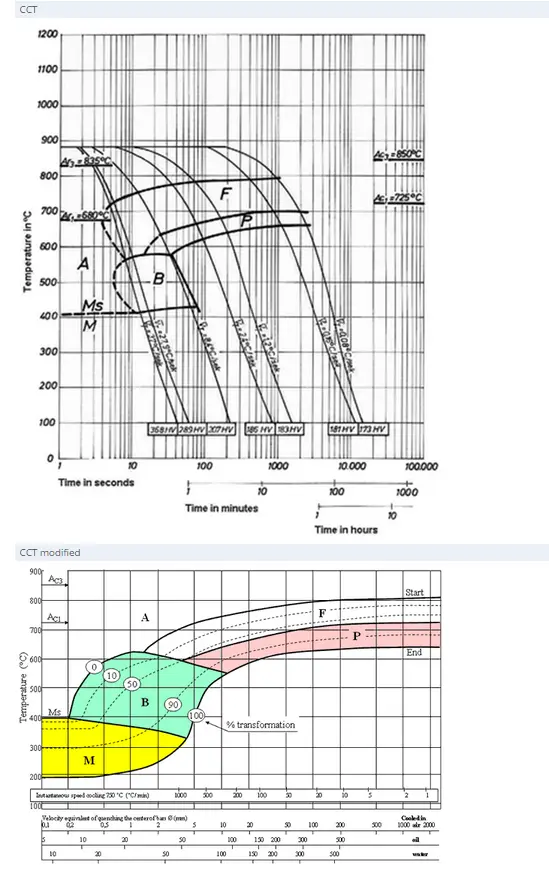Heat Treating of Copper and Copper Alloys
Abstract
This comprehensive guide explores heat treatment processes for copper and copper alloys, covering essential techniques including homogenizing, annealing, stress relieving, and precipitation hardening. The article details specific temperature requirements, processing parameters, and applications for various copper alloys, from basic mill products to specialized precipitation-hardening alloys. Particular attention is given to the relationship between heat treatment parameters and resulting material properties, providing practical guidance for manufacturers and engineers working with copper alloys.
Fundamentals of Copper Heat Treatment
Heat treatment processes play a crucial role in developing specific properties in copper and copper alloys. These treatments modify the mechanical and physical characteristics of mill products and foundry components, including wire, cable, sheet, strip, plate, rod, bars, tubing, forgings, castings, and powder metallurgy shapes. The selection of appropriate heat treatment methods depends on both the alloy composition and desired final properties.
Primary Heat Treatment Methods
Homogenizing
Homogenizing treatments address segregation and coring issues commonly found in cast and hot-worked materials, particularly those containing tin and nickel. This process proves especially critical for tin bronzes, silicon bronzes, and copper nickels, where diffusion occurs more slowly than in other copper alloys. High-tin phosphor bronzes, containing more than 8% tin, require particular attention due to their tendency toward extreme segregation. These materials typically undergo homogenization at approximately 760°C to enhance strength and ductility before cold rolling operations.
Annealing
Annealing serves to soften cold-worked metal through recrystallization. The process involves two primary approaches:
Light anneal: Performed slightly above the recrystallization temperature Soft anneal: Conducted several hundred degrees higher, just below rapid grain growth onset.
Several factors influence annealing effectiveness, including:
- Method of heating
- Furnace design and atmosphere
- Workpiece geometry
- Time and temperature parameters.
Modern copper alloys containing finely distributed second phases, such as copper-iron alloys (C19200, C19400, C19500) and aluminum-containing brasses and bronzes (C61500, C63800, C68800, C69000), maintain fine grain structures at elevated temperatures until second-phase dissolution occurs.
Stress Relieving
Stress relief treatments reduce or eliminate residual stresses that might lead to cracking or corrosion fatigue during service. These treatments occur at temperatures below the normal annealing range to avoid recrystallization and consequent softening. The process proves particularly important for:
- Brasses containing 15% or more zinc
- Aluminum and silicon bronzes
- Welded or cold-formed structures.
Temperature selection involves balancing processing time against property retention. Higher temperatures provide faster relief but may sacrifice some mechanical properties, while lower temperatures maintain properties but require longer processing times.
Precipitation Hardening Processes
Precipitation hardening represents a specialized strengthening method for specific copper alloys, achieving strength levels beyond those possible through cold working alone. The process involves:
- Solution treatment at high temperature
- Quenching to retain solute elements
- Aging at moderate temperatures for controlled precipitation
Key Precipitation-Hardening Alloys
Beryllium Coppers
Alloys C17000, C17200, and C17500 offer versatile property combinations depending on:
- Solution treating conditions
- Aging parameters
- Cold work timing relative to aging
Chromium Coppers
Alloys containing approximately 1% chromium (C18200, C18400, C18500) require:
- Solution treatment at 950-1010°C
- Rapid quenching
- Aging at 400-500°C for several hours
Zirconium Copper
C15000 (99.8Cu-0.2Zr) processing involves:
- Solution treatment at 900-925°C
- Minimal holding time to prevent grain growth
- Aging at 500-550°C for 1-4 hours
Specialized Alloy Treatments
Copper-Nickel-Phosphorus Alloys
These alloys, exemplified by C19000, undergo:
- Solution treatment at 700-800°C
- Optional intermediate annealing at 620°C
- Aging at 425-475°C for 1-3 hours
Alpha Aluminum Bronzes
Single-phase aluminum bronzes containing up to 10% aluminum can be:
- Strengthened through cold working
- Softened by annealing at 425-760°C
Process Control Considerations
Successful heat treatment requires careful attention to:
- Temperature control and uniformity
- Atmospheric conditions
- Heating and cooling rates
- Treatment duration
- Surface protection requirements
Find Instantly Thousands of Heat Treatment Diagrams!
Total Materia Horizon contains heat treatment details for hundreds of thousands of materials, hardenability diagrams, hardness tempering, TTT and CCT diagrams, and much more.

Get a FREE test account at Total Materia Horizon and join a community of over 500,000 users from more than 120 countries.